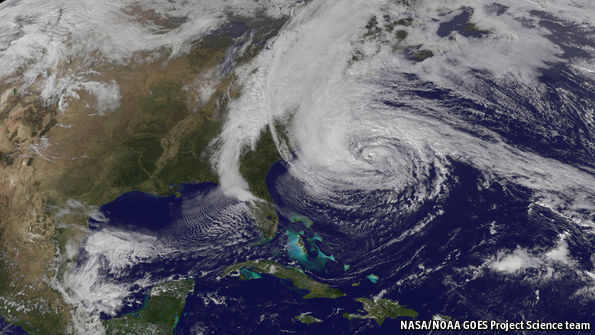Why big hurricanes weaken before they hit America’s coast

IN 2015, a bit over two years after Hurricane Sandy hit his city, Bill de Blasio, New York’s mayor, announced the creation of a $3 billion restoration fund. Part of the money is intended to pay for sea walls that will help protect the place from future storms.
Building such walls may be an even more timely move than Mr de Blasio thought when he made his announcement. As a paper just published in Nature explains, for the past two decades a natural form of protection may have been shielding America’s Atlantic coast, stopping big storms arriving. Such protection, though, is unlikely to last forever. Mr de Blasio is thus taking the prudent course of mending the roof while the sun is shining.
The study in question was conducted by James Kossin of America’s National Oceanic and Atmospheric Administration, using wind and ocean-temperature data collected since 1947. In it, Dr Kossin shows that the intensity of hurricanes which make landfall in the United States tends to be lowest when the Atlantic’s storm-generation system is at its most active.
In Dr Kossin’s view, the cause of this apparent paradox is that, when conditions in…Continue reading
Source: Economist




